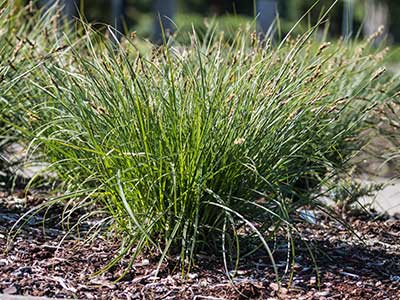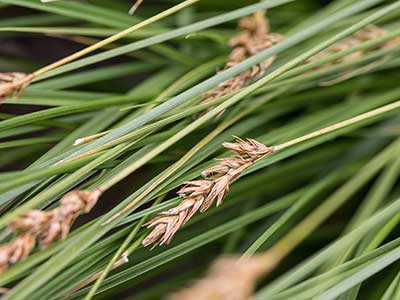Foothill Sedge
- Scientific Name: Carex tumulicola
- Garden: Natives Garden
- Plant Type: Grass/Sedge
- Evergreen/Deciduous: Evergreen
- Sun/Shade Exposure: Sun to Light Shade
- Moisture Requirements: Average to Dry
Plant Information
Foothill Sedge is commonly found from the central Willamette Valley south into California. A tightly clumping sedge with medium green foliage and 8″ wiry stems with attending flowers that are tan in spring/summer. In our region this plant can be found in upland situations where it is moist for at least half the year. Its also diminutive and almost hard to find in the wild. Under cultivation its an entirely different beast. Clumps are dense but expand with a pronounced weeping habit. To 8″ tall x 18″ wide for each individual plant. Good massed or as a lawn substitute. Takes mowing if its limited to once a year. Regular irrigation keeps it green and happy. Summer drought sees blades of tan as well as green and not so verdant. It does not run nor become a seeding pest- sticking surprisingly to itself. Plant on 1′ centers for a modern, mounding effect. Takes clay soils well. Water regularly to establish the first summer then taper off (continue watering if you want it to stay staunchly green). Combines well with perennials including native perennials such as Checkermallow (Sidalcea) and, Ranunculus occidentalis (Western Buttercup), as well as Shooting Stars (Dodecatheon) are found in closely related communities with this plant. Full sun to light shade, or high overhead shade. In California it is also known as Berkeley Sedge. Oregon native plant.
Biome: Low Water/No Water, Oregon Coast, Western Native, Willamette Valley Natives
USDA Hardiness zone: Zn6a -5º to -10ºF
Foliage color: Mid Green
Foliage season: Evergreen
Data Source
https://www.xeraplants.comPlant Photos





